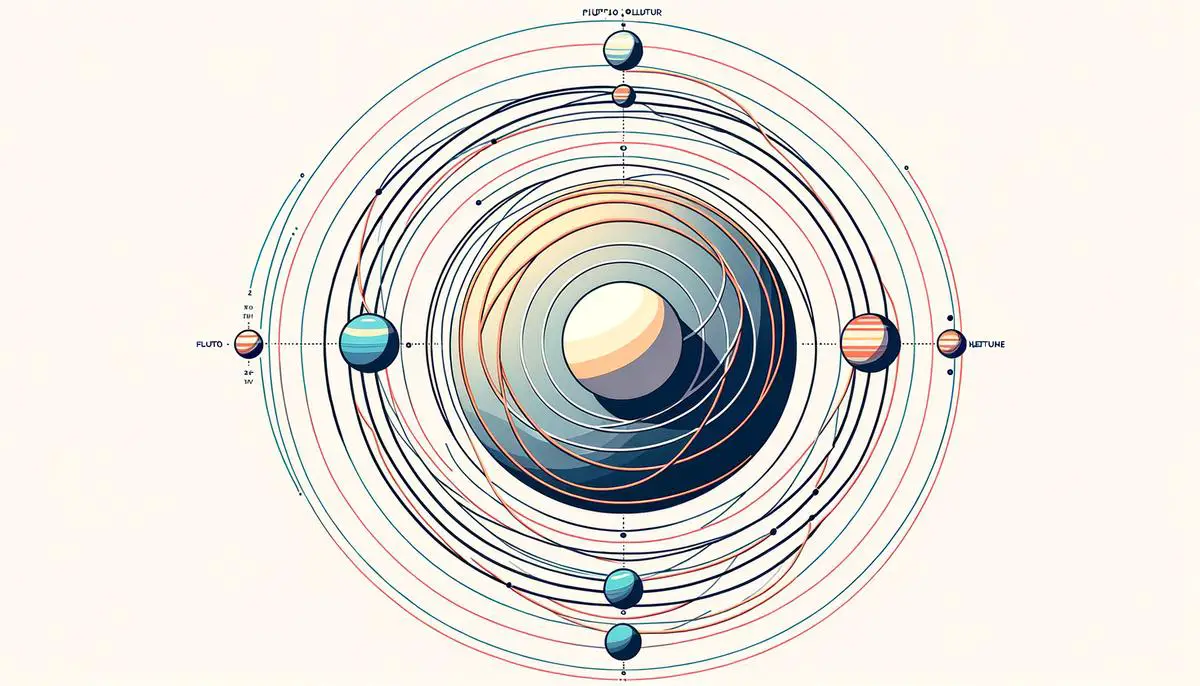Understanding Light Years
In astronomy, understanding distance is paramount, especially when confronting the vast expanses of our universe. One of the most integral units of measurement used in this field is the light year, a concept which, despite its name, is not a measure of time but of distance. A light year is the total distance that light, traveling at a speed of 186,282 miles per second (approximately 299,792 kilometers per second), can traverse in a single Earth year.1 This equates to about 5.88 trillion miles (about 9.46 trillion kilometers). Given the scale of our universe, relying on terrestrial units like miles or kilometers would quickly lead to incomprehensibly large numbers. The light year offers us a means to discuss cosmic scales in more manageable terms.
Employing light years to gauge distance allows astronomers to articulate the separations between celestial bodies with precision. For instance, explaining that the nearest known star to our solar system, Proxima Centauri, lies approximately 4.24 light years away conveys both the isolation of our solar neighborhood and the distances in space with simplicity.2 This employment of light years extends to measuring the sizes of galaxies and the voids between them, helping to map the universe in an accessible way. It defines not just the spans between stars but the cosmic fabric of spacetime itself, lending astronomers and the public a lens through which the enormity of the cosmos can be more easily understood.
Understanding this helps bridge the gap between complex astrophysical theories and public awareness, encapsulating the scales of space in a way that enriches our collective grasp of the universe. Whether discussing the time it takes for the light of distant galaxies to reach us or contemplating the journeys of spacecraft to the planets, the concept of the light year is indispensable. It serves as a fundamental building block in the language of astronomy and a guide for our curiosity across the vast distances of our universe.
Pluto’s Orbit and Distance
Pluto's orbit, more elliptical and tilted compared to other planets in the solar system, plays a crucial role in the dwarf planet's varying distance from Earth. This distinctive orbit causes Pluto to range between 30 to 49 Astronomical Units (AU) away from the Sun, influencing its proximity to our planet.3 During its orbit, there are periods when Pluto moves closer to the Sun than Neptune, altering its distance from Earth in a pattern governed by celestial mechanics. It is this orbital eccentricity, combined with its inclination of about 17 degrees to the ecliptic plane, that highlights the dynamism of celestial orbits and underscores the complex gravitational interactions within our solar system.
Understanding how Pluto's unique orbit affects its distance from Earth sheds light on broader astronomical phenomena and emphasizes the importance of gravitational forces in shaping the architecture of our solar system. When at its perihelion, or closest approach to the Sun, Pluto draws nearer to Earth, decreasing the interplanetary distance between them. Conversely, as it reaches its aphelion, or furthest point from the Sun, the dwarf planet recedes into the outskirts of the solar system, increasing its separation from Earth. These fluctuations impact celestial observation and study and delineate a certain rhythm to the seemingly static cosmos. Examining Pluto's orbit elucidates not merely the peculiarities of this distant world but enhances our comprehension of orbital dynamics and their roles across our solar system.

Light Years to Pluto
Delving into the details of interplanetary distances, particularly regarding Pluto, requires a shift from units like kilometers or miles to the cosmic measuring stick of light-years—a vast unit tailored for the universe's scale. Despite its size and demotion from planetary status, Pluto serves as a fascinating subject for illustrating the spans that separate celestial bodies within our solar neighborhood. While close when surveyed through the lens of astronomical distances, Pluto's average distance from Earth translates to approximately 0.00082 light-years.4 This measurement, while small in galactic terms, encapsulates the voids that punctuate our solar system.
Merging scientific rigor with an accessible exposition of Pluto's location in the cosmos cultivates a broader appreciation for astronomy. The light-year, despite its implications of remoteness, makes the void between Earth and Pluto more tangible to the lay observer's imagination. If one were to peer through the lens of astrophysics, they would conclude that the distance light travels in a year significantly exceeds the gap separating our world from Pluto—even at its furthest extent during aphelion. This comparison bridges the everyday with the astronomical, underpinning the inherent connectivity binding all cosmic constituents.
Tracing light's journey from the Sun to Pluto establishes another layer of kinship among celestial phenomena. Light, traveling at about 299,792 kilometers per second, takes over 5.5 hours to reach Pluto at its average distance.5 This realization, rooted in astronomical observance and physics, accentuates the dual nature of space as both vast and interconnected. Portraying such distances in terms of light-years crafts an accessible narrative through which the magnificence of our universe can be both comprehended and appreciated.
Speed of Light in Space Travel
Understanding the speed of light is crucial to comprehending interstellar travel times, as it serves as the cosmic speed limit, the fastest rate at which information and matter can travel through the universe. This speed, approximately 299,792 kilometers per second, is a remarkable number and a foundational pillar that defines our understanding of distances and time in the cosmos.6 When we talk about traveling to distant planets or stars, the vastness of space becomes evident through the lens of light speed. For example, even at this incredible speed, light takes about 5.5 hours to travel from the Sun to Pluto, demonstrating the immense distances involved in just our solar system.
In the realm of interstellar travel, the implications of light speed present a reminder of our current technological limitations and a beacon of aspiration for future explorations. Considering the fastest spacecraft built by humanity, the journey to even our nearest stellar neighbors spans lengths of time far beyond human lifespans. These travel times underscore the importance of breakthroughs in propulsion technologies and theories, such as the promising concept of Breakthrough Starshot, which aims to send tiny laser-propelled probes at a fraction of light speed.7 The speed of light not only emphasizes the challenges ahead but ignites our imagination towards overcoming these barriers, inspiring optimism in the pursuit of interstellar exploration.

The journey through astronomical distances—articulated using light years—invites us to ponder our place in the universe with wonder and optimism. It underscores our quest for knowledge and highlights how, even in the face of vast cosmic scales, human curiosity remains a driving force towards greater understanding. The light year stands not merely as a unit of measurement but as a symbol of our enduring aspiration to connect more deeply with the cosmos.
- Redd NT. What is a light-year?. Space.com. https://www.space.com/39464-light-year.html. Published January 26, 2022. Accessed April 20, 2023.
- Howell E. Proxima Centauri: Closest star to the Sun. Space.com. https://www.space.com/18090-proxima-centauri.html. Published July 8, 2022. Accessed April 20, 2023.
- Gregersen E. Pluto. Encyclopædia Britannica. https://www.britannica.com/place/Pluto-dwarf-planet. Accessed April 20, 2023.
- Pluto distance from Earth. ThePlanets.org. https://theplanets.org/pluto-distance-from-earth/. Accessed April 20, 2023.
- How long does it take to get to Pluto?. The Planets. https://theplanets.org/how-long-does-it-take-to-get-to-pluto/. Accessed April 20, 2023.
- Moskowitz C. What is the speed of light?. Space.com. https://www.space.com/15830-light-speed.html. Published June 27, 2022. Accessed April 20, 2023.
- Breakthrough Starshot. Breakthrough Initiatives. https://breakthroughinitiatives.org/initiative/3. Accessed April 20, 2023.
![]()
